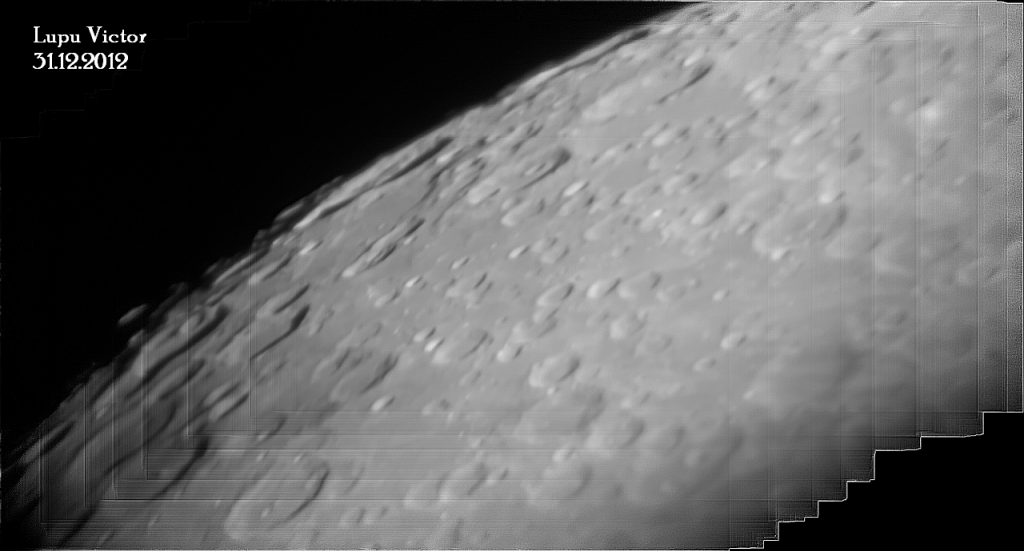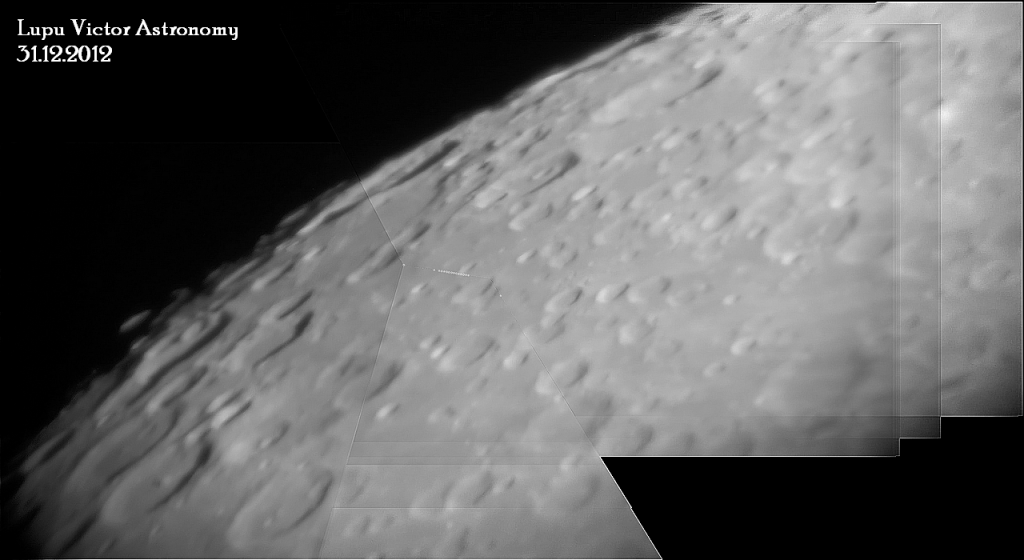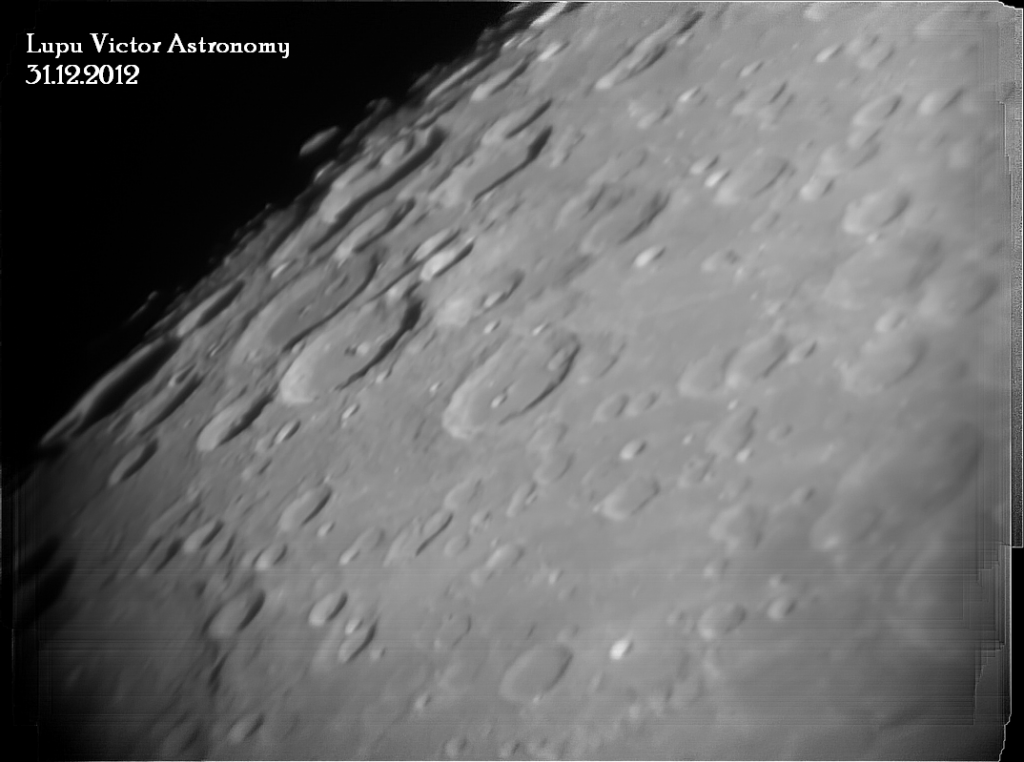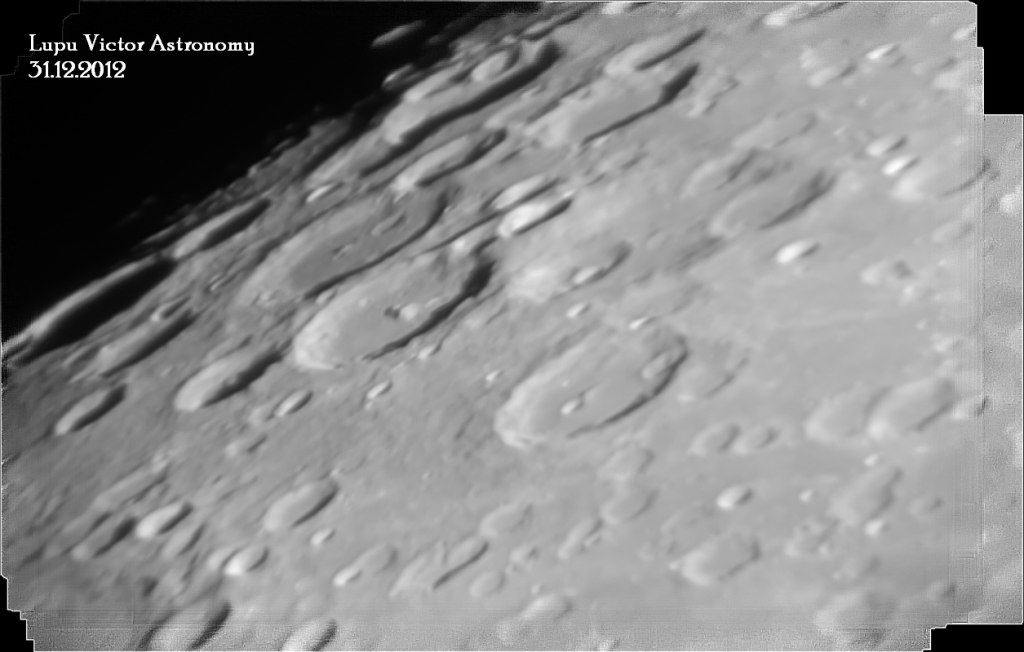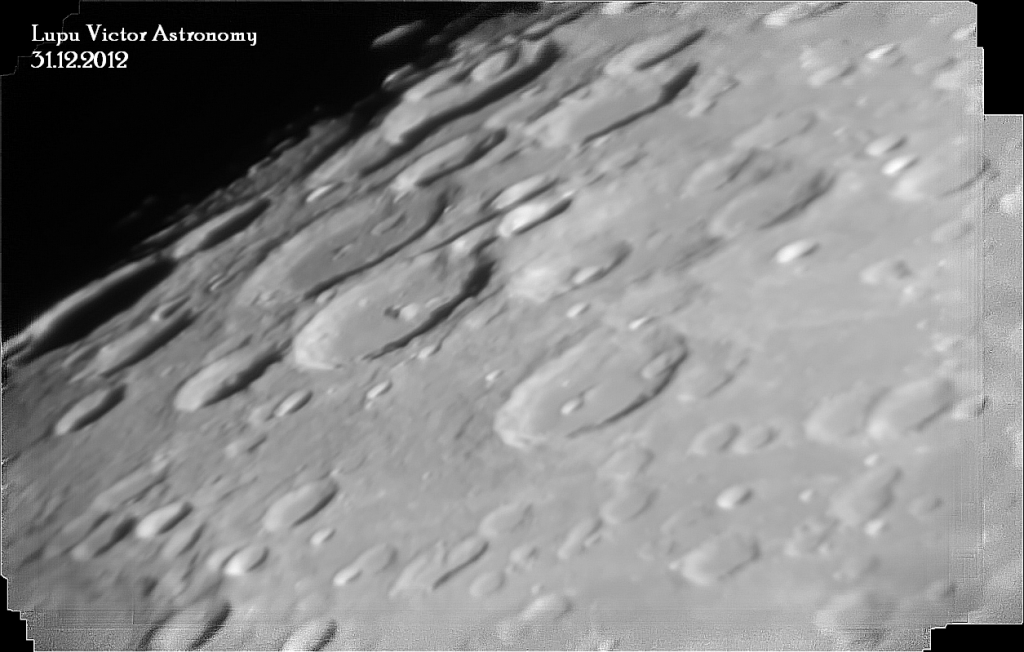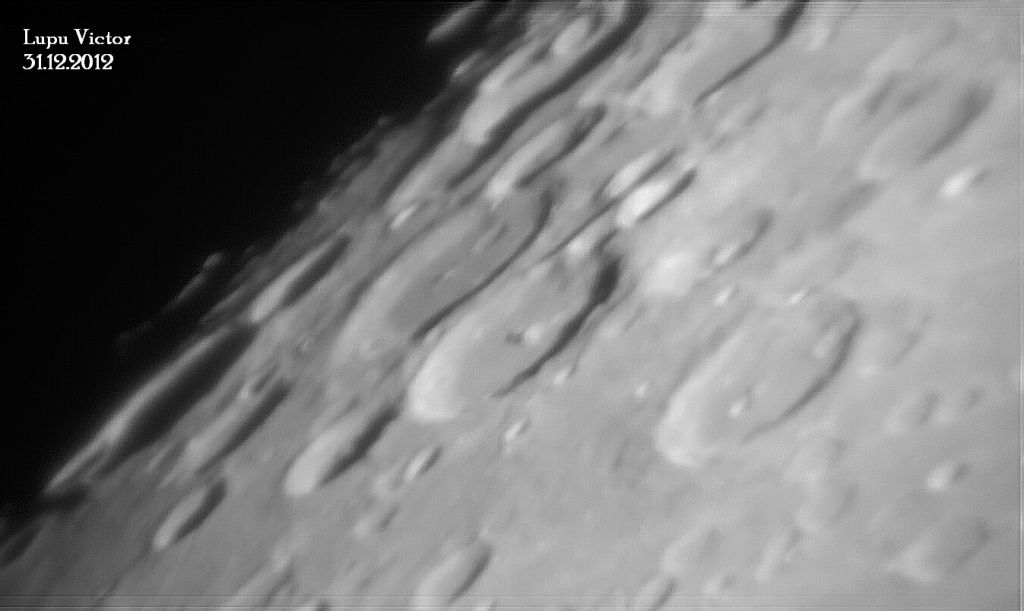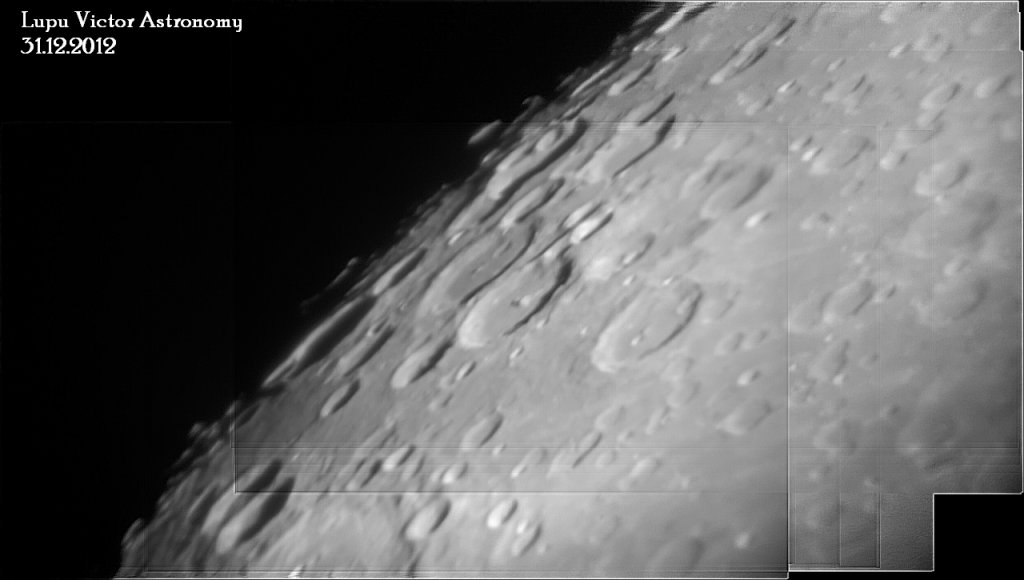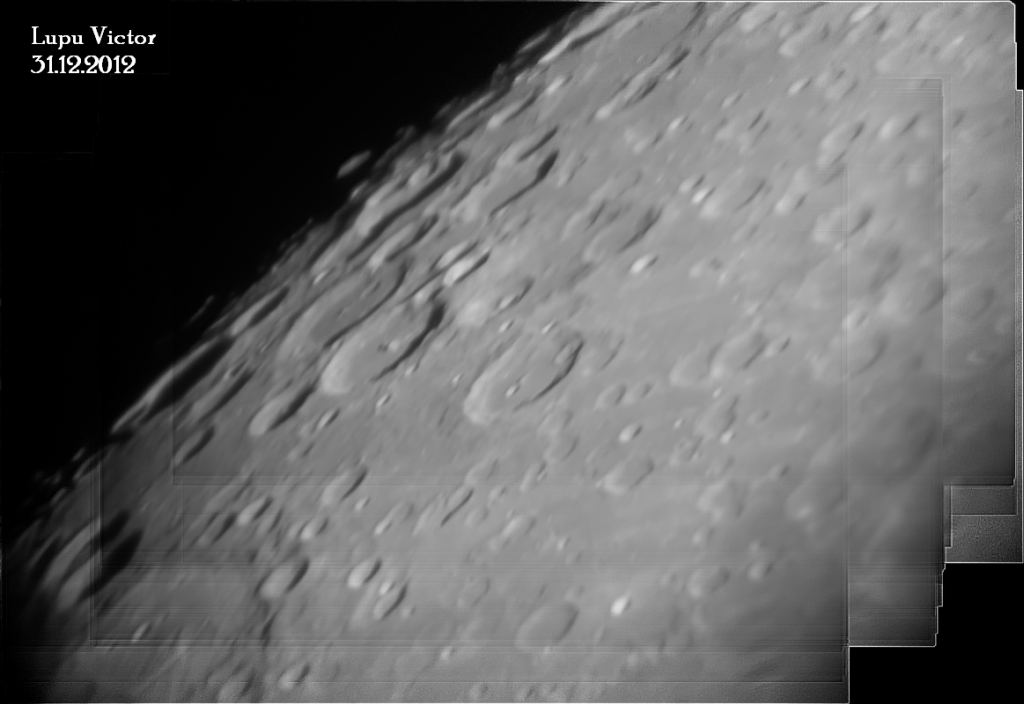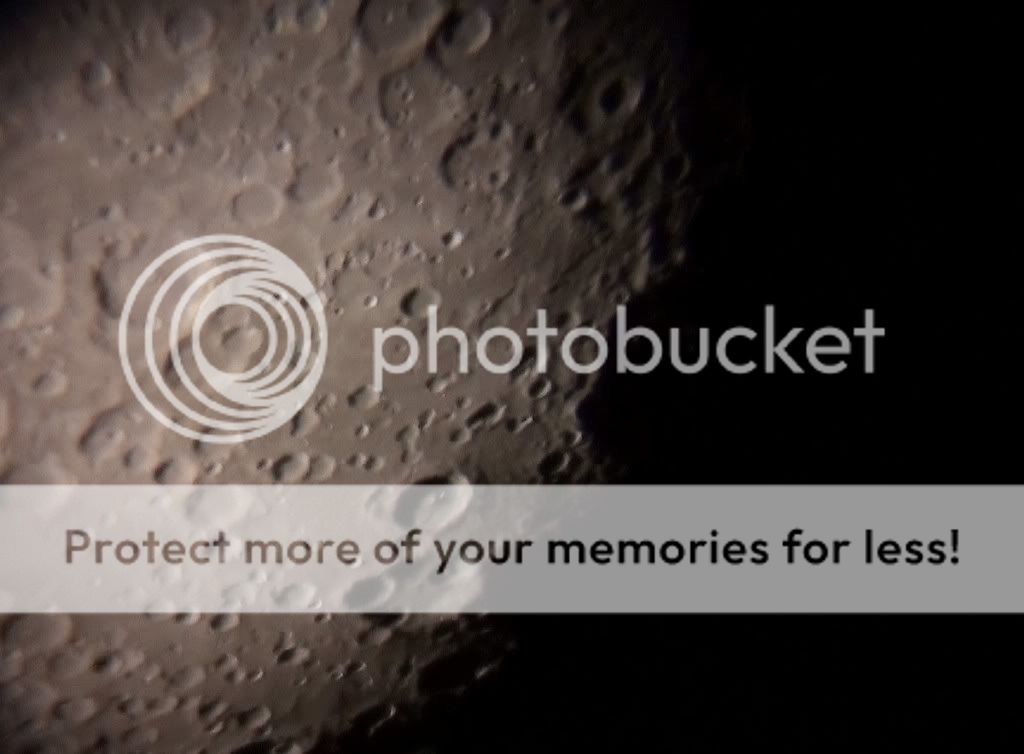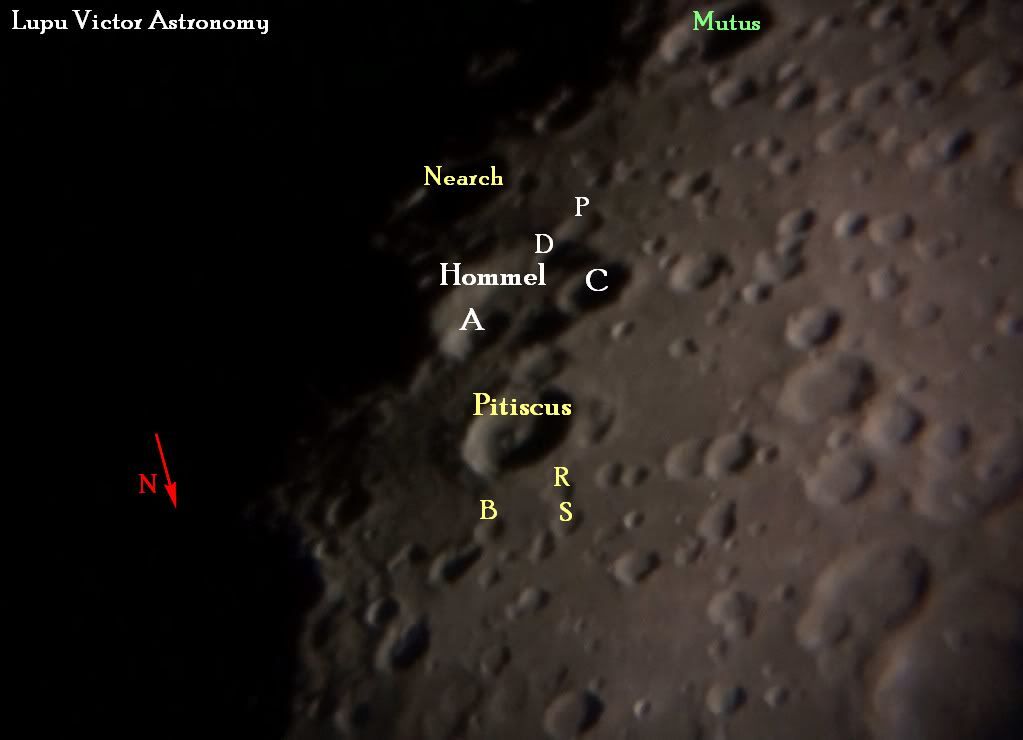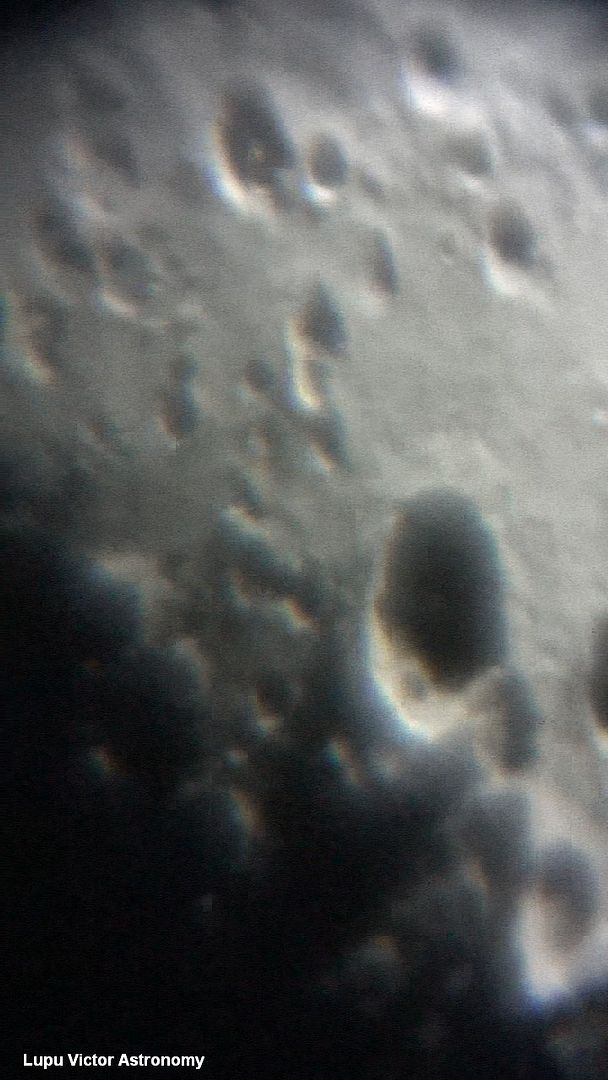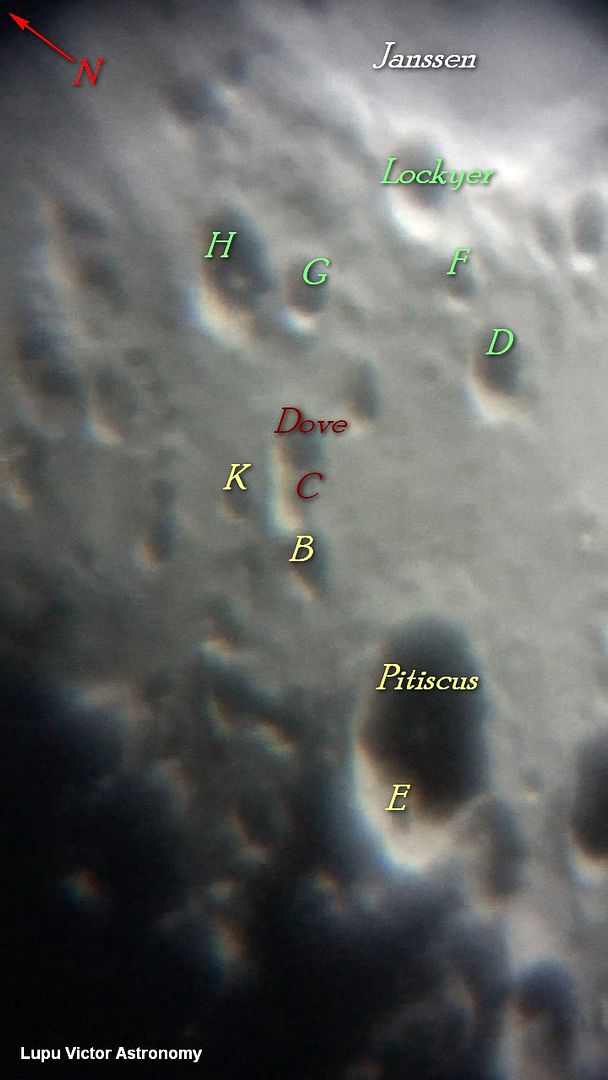These images contain a large amount of information about southern craters of the Moon, especially Hommel (125 km), Vlacq and Rosenberger (89/96 km).
The video can be viewed here.
Images processed in Registax 5, can be seen here. In each of these articles is discussed in detail this area.
Images of the article are simple video captures.
Age of the Moon: 17 days
Phase: 93% (0% = New, 100% = full)
Distance: 394.960 km
Optics: Celestron C8-Newtonian telescope, 20mm Plossl, 2x Barlow
Mount: CG5 (EQ5) motorized
Camera: Sony CX130
Filter: no
Date: 31/12/2012
Location: Baia Mare, Romania
Processing: FastStone Image Viewer
952 frames at 82% best quality in Registax
|










 Wednesday, June 11, 2014
Wednesday, June 11, 2014
 Unknown
Unknown












